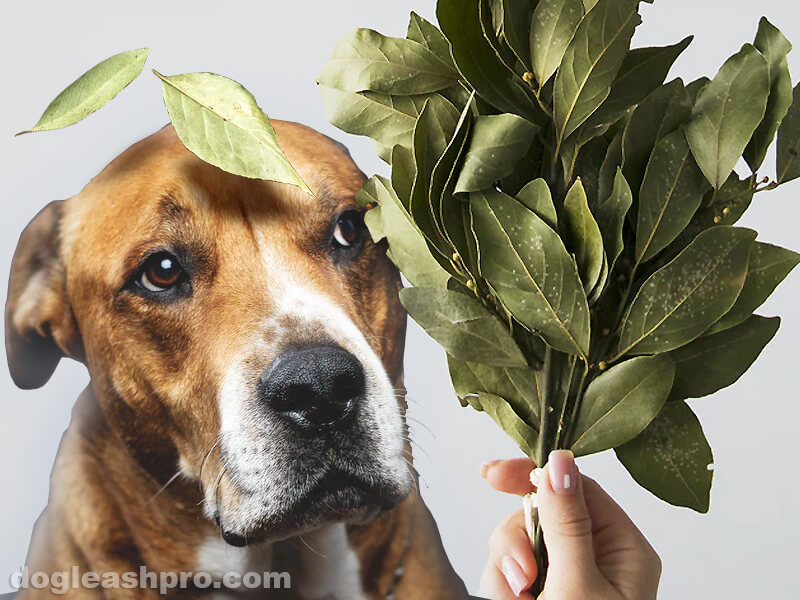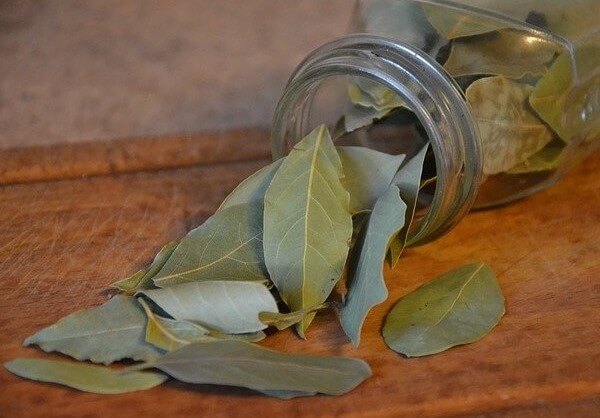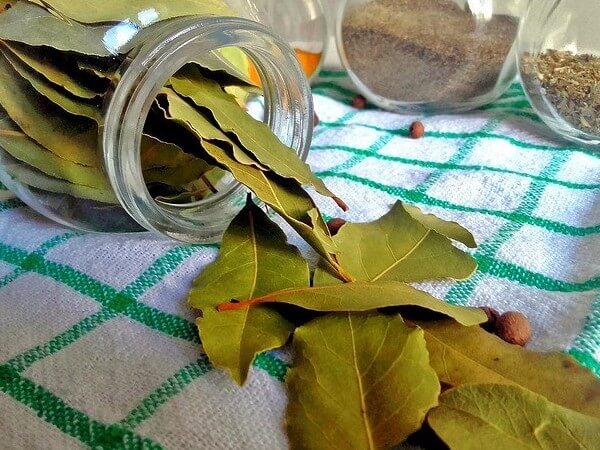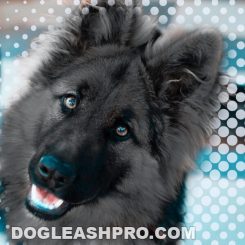
My mom loves to make lentil soup. She’ll add a few Bay leaves into the soup to give it a slightly sweet taste with tea and menthol-like flavor. Yesterday, she dropped a Bay leaf on the floor and immediately picked it up before our dogs can get to it. She reacted so quickly because she wasn’t sure if Bay leaves are safe for doggy consumption.
Can dogs eat Bay leaves? No, dogs should not eat Bay leaves. Bay leaves contain essential oils and chemicals that are harmful to dogs. Ingesting Bay leaves can cause diarrhea, vomiting, and digestive issues. Avoid feeding your dog Bay leaves. If your pooch eats it accidentally, call your veterinarian right away.
Table of Contents
Are Bay leaves toxic to dogs?
Yes, there are many reasons why Bay leaves are toxic to dogs.
First, they are a type of herb that is not easily digestible for dogs.
Second, the Bay leaves have sharp edges. When your furry friends accidentally eat one, they are at risk of choking due to the size of the Bay leaves. The sharp edges can also cut or tear your pup’s throat and digestive tract. This will lead to internal bleeding and damage to the digestive tract.
There are also more harmful and dangerous chemicals in this herb than there are safe ones. Let’s continue reading to find out why your canine companions should stay away from Bay leaves and which chemicals in Bay leaves are toxic to dogs.
What are Bay leaves?

Bay leaves come from the bay laurel tree, which is an evergreen shrub that usually grows in the Mediterranean or areas with warmer climates. While Bay leaves are often used as a herb, they are also dried, packaged, and used in soup and stew due to its aromatic and slightly sweet taste.
The leathery and thick Bay leaves are about 1 to 3 inches long, depending on their types. There are many different types of Bay leaves:
California Bay leaves (California laurel)
California Bay leaves are typically narrow so they are longer and thinner. They are usually between 2 to 3 inches long. California Bay leaves have a slightly menthol or mint taste and are more potent.
Turkish Bay leaves (Mediterranean)
Turkish Bay leaves (Mediterranean) are typically wider, fatter, shorter, and oval in shape. They are usually between 1 to 2 inches long. Many people claim that the Turkish Bay leaves have the best flavor and they have a more subtle flavor.
In the United States, if you buy fresh leaves, then they are most likely the California Bay leaves. Most people like my mother prefer the subtle flavor of the dried Turkish Bay leaves so they don’t overpower the flavor of the soup.
Fun Fact: Many people use Bay leaves in their Crawfish boil. The Bay leaves give the seafood dish a menthol-like flavor to balance out the fishiness taste.
Bay Laurel (American Bay leaves)
The American Bay leaves are often used in stews, soups, and many dishes. They also have a distinct fragrance and flavor. You can usually find American Bay leaves in light green or medium green color. There is one long vein going down the length of the Bay leaves.
It’s best to remove the Bay leaves from the food before you eat it as it isn’t ideal to eat them.
Indian Bay leaves
Indian Bay leaves are wider in width and longer in length. Instead of just one long vein, there are three veins that run down the length of the Indian Bay leaves. They are olive green. Many people love the Indian Bay leaves because they have a mild cinnamon bark taste and fragrance.
West Indies Bay leaves
As the name suggests, the West Indies Bay leaves come from the West Indian bay tree. They are used in many Caribbean dishes.
Mexican Bay leaves

As the name suggests, the Mexican Bay leaves are grown in Mexico and used in many Latin American dishes like braised meats, stews, soups, marinades, and seafood.
Regardless of which Bay leaves you choose to use, all types of Bay leaves contain the following:
- Essential oils.
- Eucalyptol.
- Terpenes.
- Terpinyl acetate.
- Sesquiterpenes.
- Methyleugenol.
- α- and β-pinenes.
- Phellandrene.
- Linalool.
- Geraniol
- Terpineol.
- Lauric acid.
Indonesian Bay leaves (Indonesian laurel)
The Indonesian Bay leaves are usually only found in Indonesia and those living outside of Indonesia will most likely not be able to find this type of Bay leaves. Generally, Indonesians use this herb in their meat dishes.
Let’s take a look at the percentage of chemicals in the Bay leaves and discuss each chemical:
| Chemicals | Percentage |
| Essential oils | 1.3% |
| Eucalyptol | 45% |
| Terpenes | 12% |
| Terpinyl acetate | 8% to 12% |
| Sesquiterpenes | 3% to 4% |
| Methyleugenol | 3% |
Essential oils
Essential oils from Bay leaves are not safe for dogs. In general, dog owners should keep essential oils away from their pooch because they contain toxic chemicals that can poison your pups when they lick it or when the oils get onto their skin.
Accidentally ingesting essential oils can cause the following symptoms:
- Anorexia.
- Vomiting.
- Diarrhea.
- Gastrointestinal upset.
- Neurologic signs: disorientation, coma, ataxia, and seizures in severe cases.
Essential oils get absorbed very quickly when they are ingested so it’s crucial that you contact your veterinary professional right away to get treatment as soon as possible.
No matter if the Bay leaves are cooked or raw, it’s best to avoid feeding your furry friends this tasty herb.
Eucalyptol
We highly recommend that you keep Bay leaves away from your four-legged friends because they contain eucalyptol.
Eucalyptol is an essential oil that is toxic to our canine friends. Once ingested, your pooch may experience the following:
- Vomiting.
- Diarrhea.
- Muscle weakness.
- Depression.
- Salivation.
Terpenes
One of the chemicals in Bay leaves that are safe for dogs is terpenes. This chemical can help treat pain in dogs and help them deal with pain. Some veterinary professional recommend terpenes for canines with the following:
- Chronic pain.
- Loss of appetite.
- Sleep disorders.
- Epilepsy.
You can find terpenes in CBD oil for dogs. Before you use this chemical to help treat your dog’s pain, be sure to consult with your veterinarian first for advice and recommendation.
Sesquiterpenes
Since Bay leaves contain Sesquiterpenes, it’s best to avoid feeding your furry friends this herb.
The sesquiterpenes chemical can cause a lack of coordination and vomiting in our canine friends.
Methyleugenol

The methyleugenol chemical contains a chemical that is very toxic to dogs: eugenol.
Eugenol is actually used for a variety of purposes including as an insecticide and insect attractant to protect your pooch from ticks, external parasites, and fleas.
Additionally, many essential oils contain methyleugenol for aromatherapy and massage oil purposes. Not only is methyleugenol used in food, but also an ingredient to add fragrance in toiletries, perfumes, and detergents.
If your canine friends accidentally ingest a high dosage of eugenol, they may experience these symptoms:
- Vomiting.
- Decrease in body temperature.
- Hind legs are unable to move properly.
- Motor dysfunction.
So, can dogs eat Bay leaves?
As you can see from the information above, Bay leaves are not safe for dogs. They contain toxic chemicals that can cause a variety of health issues in dogs. If your pooch accidentally eats a Bay leaf or is experiencing symptoms, make sure to visit your vet right away.
If you must use Bay leaves as one of the ingredients in your soup, stew, or dish, be sure to store any unused dried Bay leaves in a closed kitchen drawer, on a high shelf, or on top of the refrigerator. This will ensure that you keep the Bay leaves out of your furry friend’s reach.
DISCLAIMER: THIS WEBSITE DOES NOT PROVIDE MEDICAL ADVICE
The information, including but not limited to, text, graphics, images and other material contained on this website are for informational purposes only. No material on this site is intended to be a substitute for professional veterinary advice, diagnosis, or treatment. Always seek the advice of your veterinarian or other qualified health care provider with any questions you may have regarding dietary needs.
Resources:
https://en.wikipedia.org/wiki/Bay_leaf
https://www.aspca.org/pet-care/animal-poison-control/toxic-and-non-toxic-plants/bay-laurel

With over five years of specialized experience as an animal writer, my expertise lies in dog nutrition, health, behavior, grooming, and training. I am dedicated to delivering helpful and informative content that caters to the well-being of our furry friends. My primary goal is to empower pet owners with knowledge and ensure our canine companions thrive in health and happiness. In my free time, I love volunteering at local dog rescue centers.






